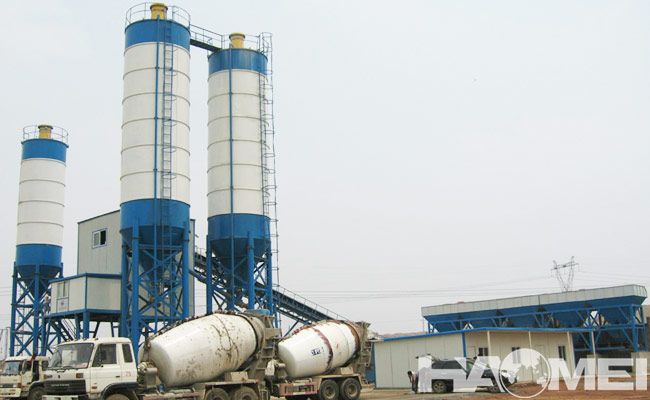Stationary Batching Plant
Writer:Admin Time:22/12/01The working principle of stationary batching plant is divided into four parts: sand and gravel feeding, powder (cement, fly ash, expansion agent, etc.) feeding, water and admixture feeding, transmission mixing and storage. Mixer control system After power on, enter the man-machine dialogue operation interface, and the system performs initialization processing, including formula number, concrete grade, slump, production volume, etc. Each silo and weighing hopper are tested according to weighing, and the output material empty or full signal, prompting the operator to determine whether to start the mixing control program. Start the sand and stone belt motor to feed the material to the metering hopper; open the butterfly valve of the fly ash and cement tank, start the screw motor to convey the fly ash and cement to the metering hopper; open the control valve of the water tank and the admixture tank to allow water and admixture to flow into the metering hopper. After the metering meets the set requirements, the metering hopper door is opened, and the ingredients enter the started mixer for mixing, and the mixer door is opened at the set time, the concrete enters the mixer truck that has received the material.

When mixing and feeding stationary batching plant, stones are usually put first, then cement, and then sand and water are put in order. Why do you feed it like this? This is learned, the main purpose of concrete batching plant is to ensure that the stone and cement are mixed evenly, and prevent the cement from entering the mixer together with other coarse and fine aggregates. Small cement particles will be formed soon after contact with water, and the smaller the water-cement ratio, the more serious it will be.
In addition, since the small cement particles are attached to the coarse aggregate, the larger the particle size of the coarse aggregate, the harder it is for the small cement particles to break. In addition, during the mixing process of stationary batching plant, due to friction and impact, the small cement particles on the back side of the aggregate movement direction are effectively protected, and the coarse aggregate with a particle size several times or ten times larger than the small cement particles becomes a protective barrier for the small cement particles. After mixing, part of the cement particles still cannot be broken, and after hardening, they become cement blocks to fill the aggregate gap, resulting in a decrease in the strength of the concrete, and even causing hidden dangers of quality accidents.
- Previous:Portable Concrete Batch Plant For Sale...
- Next:Concrete Dry Batch Plants For Sale...

